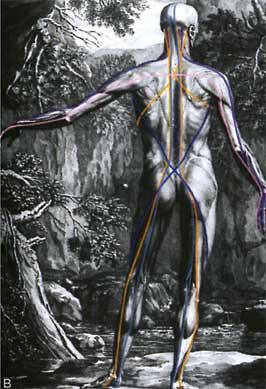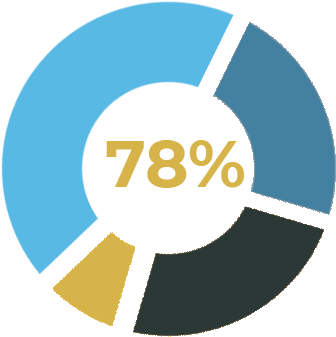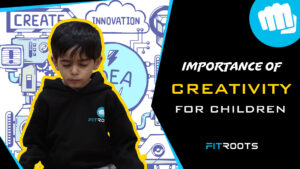In this blog, you will learn about functional training, and why it is the best way to build strength, in a safe, healthy, and effective way.
But first, we should start by defining exactly what ‘Functional Training’ is.
What is the definition of Functional Training?
The simplest definition is, “Functional training is a classification of exercise which involves training the body for the activities performed in daily life.”
However, the fitness industry, has taken the meaning of ‘activities performed in daily life’, to be far from what we have evolved to do.
For example, bodybuilding advocates, CrossFit fanatics, and many others, insist on using movements like Barbell Squats, Deadlifts, Bench Press etc. as their training foundations.
But we now know, that our body, and biomechanics mean we must train a certain way.
Biomechanics is the study of the mechanical laws relating to the movement or structure of living organisms.
It means that our primary positions and movements since the dawn of time, have been standing, walking, running, and throwing/punching.
If you want to know more about the right way to train, you can see what’s better, the gym vs Martial Arts, check out our blog here.
What does it mean to train functionally?
What does it even mean to train functionally?
Why should you train in one way, and not another?
Why does one type of training, consistently lead to more effective, sustainable, and injury proof results than others?
And as a result, why should you avoid certain types of training?
These are all questions you should answer, before considering how you train, and what you should do in your training.
This lesson is more of a rationale towards a certain type of training, and why you should avoid certain others. But we will get specific on some of the examples, and the subtopics mentioned throughout this lesson, in future ones.
History and Functional Training
In short, you should conduct your training for your biology, structure, and evolutionary history.
Anthropology is the study of human societies and cultures and their development. And in this case, the study of human biological and physiological characteristics and their evolution.
The research and discussion are based around how our history has impacted the way we move, live, and be.
The implication is that our history dictates the types of movements we are meant to do.
With this in mind, why does the health, wellbeing, and fitness industry promote training methodologies, which don’t fit our biology, structure, and evolutionary history?
What we are really asking you is…
Are you training to be a human, or to be a robot?
Human biology and Functional Training
Firstly, we are bipedal (using two legs for walking) beings.
Secondly, we have a specific human gait cycle (A single gait cycle is also known as a stride, when walking or running).
Lastly, we have an upright posture.
Therefore, our movement must respect these principles.
The Human Planes of Movement & Motion
To go deeper, we must consider the different planes/types of human movement.
These are:
- Sagittal Plane
- Frontal Plane
- Transverse Plane
The Sagittal Plane
This involves Forward or Backward movement. Exercise examples which fit this plane of motion include Sit Ups, Biceps Curls, Squats, Deadlifts, and Bench Press.
The Frontal Plane
This involves Side to Side movement (albeit confusing considering the name ‘frontal’). Exercise examples which fit this plane of motion include (leaning from side to side) Sidebends, Lateral Raises, and Star Jumps.
The Transverse Plane
The Transverse Plane involves Rotational movement. Exercise examples which fit this plane of motion include Walking, Running, Martial Arts, Throwing, and much more.
Below, you can see an image of how the planes are split on a model of the human body.

To picture the three planes of movement, imagine slicing through the body (as pictured above), like so:
- First through the center, dividing the body from the left to the right to make up the Sagittal Plane
- Next through the body from the left side to the right, separating the front (anterior) and back (posterior) halves to create the Frontal Plane (front side and back side)
- Finally, cutting straight through the hips to divide the top of the body from the bottom, the Transverse Plane
Why you should do Functional Training
Now that you are aware of the body’s planes, you must ensure your training programmes include exercises from each of the planes of human movement.
Unfortunately, most movements in a majority of people’s training routines are in the Sagittal Plane, hence the obsessions with the ‘Mirror Muscles’.
This includes exercises like Bench Presses, Press Ups, Sit Ups, Squats, Deadlifts, and so on.
What’s wrong with conventional training?
The problems begin here.
If you only include Sagittal Plane movements in your training, you are not training for real life. You are not training for our fundamental movements of standing, walking, running, and throwing.
An obsession with the Sagittal Plane, as demonstrated in Bodybuilding, CrossFit, Bootcamp, Olympic Lifting, Traditional Strength & Conditioning (S&C), and other similar training styles, promotes problems within your body, by not respecting your biological make up.
Which plane of movement is best?
You can become immensely strong, prevent injury, increase connectivity between the body as a whole unit, avoid promoting dysfunction, relieve pain, and respect biomechanical principles, by focusing on Functional Transverse Plane training.
It doesn’t mean you shouldn’t do any Sagittal Plane or Frontal Plane movements, it’s just that they should not be the priority. We should focus on what we do most, by our nature.
This gives us solid reason to believe that training should be done predominantly in the Transverse Plane.
How fascia helps Functional Training
To further understand the above, let’s have a look at the interconnected network of fibres within our bodies, called Fascia.
Fascia is, the “internal connective tissue that wraps around organs, providing support and holding parts together. It has the appearance of a very thin spider web, connecting layers of muscle and surrounding all internal body tissues.”
Fascia is a fascinating and beautiful part of us, which affects us deeply in various ways, and all our movements.
Within our bodies, nothing is completely separated, disjointed, and acting independently of something else within us, e.g. muscles, tendons, ligaments etc. This is what fascia demonstrates to us, very clearly.
Watch this video from Tom Myers of Anatomy Trains (who was one of the pioneers bringing the concept of fascia to the masses) to get an introduction to Fascia, how it keeps us connected, and how it affects us in the bigger picture.
Once you watch the video above, it is amazing to witness how the body is connected through fascia, and how it implies you need to move in a certain way to optimise those connections.
To understand this even deeper in a training specific context, let’s take an Isolation exercise, such as the Biceps Curl, and understand how it functions.
Isolation Exercises
Isolation exercises in physical training are exercises that involve only one joint, and a limited number of muscle groups. This contrasts with compound exercises that work two or more joints, and more muscles.
Compound Exercises
Now, think of a Compound exercise, such as ‘throwing’ a punch. If done correctly, there is rotation of the thoracic (upper) spine, activation of the group of core muscles, stabilisation of the hips through glute activation, rotation of at least one of the feet, and harnessing the power of breath.
Even if you don’t understand all the above, and other intricacies involved with Functional Training movements, you can appreciate that it means the body must be connected as one unit, and must be in complete synchronisation for the punch to be ‘thrown’ with great force.
We must apply the appropriate movements, forces, and thoughts to our bodies to make full use of our myofascial system.
What training facilities & equipment do you need?
With the comparison of the Isolation vs Compound exercise above, it’s necessary to consider where you can do Functional Training, and how you can do it, if you don’t have the right equipment.
Most commercial gyms and fitness facilities have an endless variety of pointless weight training machines, and other contraptions, most of which target and isolate specific muscles, but some target compound movements too.
Due to the standard gym set up, the machines and equipment you may use, do not bear much of a relationship to the movements people make in their nature, activities, or everyday life.
First and foremost, you need to learn to operate, master, and utilise your own body.
Functional equipment includes*:
Recommended Functional Training equipment
- Your Body
- Barefoot shoes
- Cable/Pulley Machines
- Kettlebells
- Macebells
- Clubbells
- Barbells (Mostly for rotational training, not to Bench Press, or put on your neck/back!)
- Dumbbells
- Medicine Balls
- Physio Balls/Swiss Balls/Exercise Balls
- Resistance Bands
- Wobble Boards and Bosu Balls
- Sandbags and Bulgarian Bags
- Skipping Rope
- Suspension System e.g. TRX
- Adjustable Grips
- Myofascial Release Tools, e.g. Foam Rollers, Massage Balls, Manipulation Tools like the Body Back Buddy
- Punch bags
- Boxing Gloves
* I have linked the essential recommended products above, to help you easily find the right equipment for you.
Most gyms will have a few pieces of these types of equipment, but rarely do they have them all.
It is best to understand how your body works first, and what you need to improve on, then you can decide what equipment and/or training to do.
What is Myofascial Release? And how will it reduce your pain?
First off, if you haven’t read the ‘Fascia’ section above, or need to re-read it, go back, and study that first.
Myofascial Release definition
“Myofascial Release is a safe and very effective technique, that involves applying sustained pressure to tightness/adhesions due to trauma, bad posture/movement, or inflammation into the Myofascial connective tissue restrictions, to eliminate pain, tension, and restore motion.”
Think of it like deep massage, except with a focus on having it regularly and consistently, (daily) to see and feel great results.
The likelihood is that you have various movement dysfunctions, pain, and postural issues.
These problems need to be ‘released’, to get you out of the pain you’re in first, and then you can build the strength on to that.
Most people do it the other way around, they try to physically ‘out train’ their dysfunctions. This is unfortunately not ideal, and will likely lead to more pain in the long run.
If you have had a decent massage before, you will know what it is like coming out feeling as if you are a few inches taller, having better posture, and generally feeling relaxed in your body.
Imagine if you could get your body in to that state consistently, you will be able to build upon a good foundation, without the risk of reinforcing your biomechanical problems.
Therefore, the formula to reduce pain in your body with myofascial release goes like this:
3 Steps to Reduce Pain in Your Body
- Isolate the problem/pain
- Release the area directly, and any surrounding/interactive areas
- Reinforce the new position by creating strong neuromuscular (body-mind) associations
Types of exercises in Functional Training
Once you have done all the above successfully and consistently, then you can reinforce your new positions with the correct forms of Functional Strength Training.
This section will be brief, but we will go into further details on specific exercises in other lessons.
We must distinguish between two types of exercises here:
- Bilateral
- Unilateral
Bilateral Exercises
Bilateral exercises work both sides of your body, as both sides share the tension of the exercise. Common exercise examples are, Barbell Biceps Curl, Squat, Deadlift, Press Ups etc.
A bilateral exercise can be a multi-joint or single-joint movement.
Unilateral Exercises
Unilateral exercises work a single side of your body, but have reciprocating forces generated on the other side of the body. Common exercise examples are, Dumbbell Biceps Curl, ‘Throwing’ a Punch, Lunges etc.
Similarly, a unilateral exercise can be a multi-joint or single-joint movement.
Bilateral vs Unilateral – Which is better?
As with many of the problematic types of training, and exercise obsessions mentioned earlier, many have a bilateral exercise fixation.
Our reality dictates that we should train more unilaterally, to accommodate our Gait Cycle, and our biomechanics.
This is because our bodies work synergistically.
For example, when you are walking and/or running, as your left foot steps forward, your right arm swings forward simultaneously, and vice versa.
When you are ‘throwing’ a punch with your right hand, your left shoulder retracts back, and initiates the rotation of your thoracic (upper) spine.
Martial Arts for example, is fundamentally functional due to its original use case. If it wasn’t functional, or didn’t work properly, whether it be in war, combat, competition, or on the streets, it would have been disposed of very quickly.
As you can see from these simple examples above, most of human movement operates in the unilateral sphere.
We haven’t even mentioned the training of your feet, which is your constant connection with the world.
But that’s a deep topic left best for another lesson.
What Happens If You Don’t Train Functionally?
If you don’t train functionally (you may have figured it out by now), but many things can happen:
With poor movement, posture, and numerous dysfunctions, you may suffer from:
- A weak core
- Anterior Pelvic Tilt (common issue from too much sitting, glute amnesia, and poorly designed training programmes)
- Injuries and/or injury risks intensifying and increasing rapidly
- Forward Head Posture
- Kyphosis (rounded upper back)
- Inflammatory and/or gut issues
- Excessive stress
- Unnecessary pain
- Low confidence and self-esteem
Of course, there are more potential problems, but these are the most common ones we witness very frequently.
My experience of NOT doing Functional Training
I have personally trained myself in most of the dated and problematic types of training that I have mentioned above.
Not only this, but I have trained hundreds of students over the years, and every time, I can spot their biomechanical, and health issues quickly.
Unfortunately, a lot of their health problems were down to the way they were moving, training, and how their thinking about it influenced their decisions.
On a similar note, I have experienced ‘gains’ (muscular growth) from the aforementioned dated and problematic types of training myself.
I have increased my muscle mass, got stronger, more flexible, more mobile, and so on.
But eventually, I realised it was all a farce.
Yes, I got all of these things, but at the expense of what?
I got stronger, but I couldn’t move and rotate as well. So, my force, speed, and strength generation suffered as a result.
I thought I became more flexible and mobile, but in reality, I became hypermobile (excessively mobile) in certain joints and places, which then led to excessive stiffness and pain elsewhere.
You see, I have been there and done that.
I never want to experience the pain and problems that bad types of training create, ever again.
Similarly, I don’t want you to experience pain and problems, or continue experiencing issues if you are training incorrectly.
So please, train properly, safely, and functionally, for your own benefit and longevity.
So, What Now?
When I started training (around 1995), I went through lots in the realm of the health, wellbeing, and fitness industry, and sorted the wheat from the chaff, so you don’t have to.
I have gone back to the roots of our human history, and hence why I created ‘FitRoots’.
I have also come back to the essence of Martial Arts, and that is to treat it as a way of life. So that you can master your life with Martial Arts, not just physically, but mentally too.
This is to truly give you, the best of what you need to transform your body and mind, safely, and effectively.
In this lesson, we have briefly covered a vast topic, and plenty of subtopics.
As there’s still so much ground to cover, I don’t expect you to get all of this straight away, and especially until you start understanding how to apply your new knowledge.
With that in mind, we will be bringing you many future lessons, covering various topics so you can make the most of your new state of mind on training.
And last, but not least…
Now you understand why you should be training functionally, will you?
Join us for your FREE Taster Class!
Not local to us, but still want to learn how to train functionally?
Join The FitRoots Academy online here!
Contact us NOW, and we will provide you with the right support, from the start.










